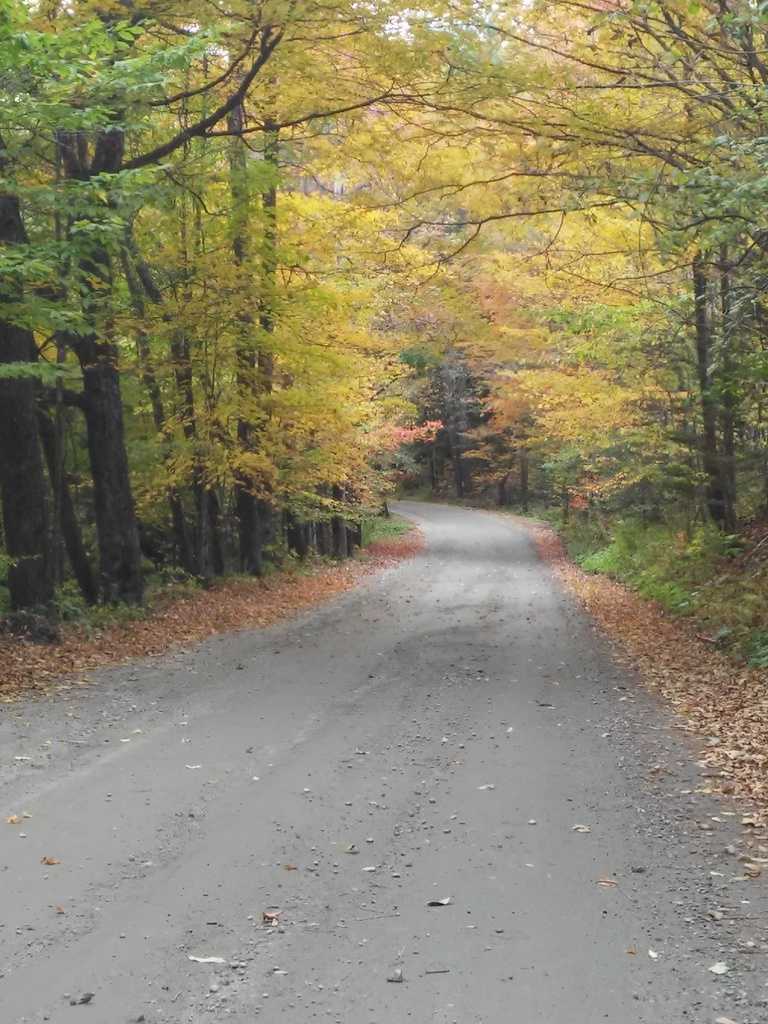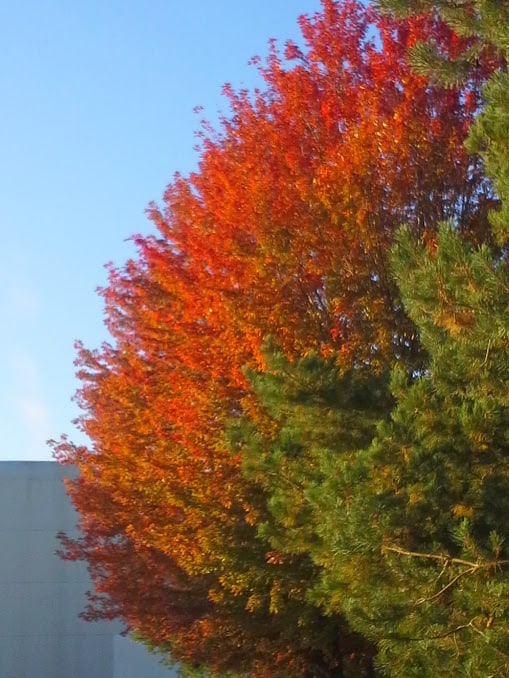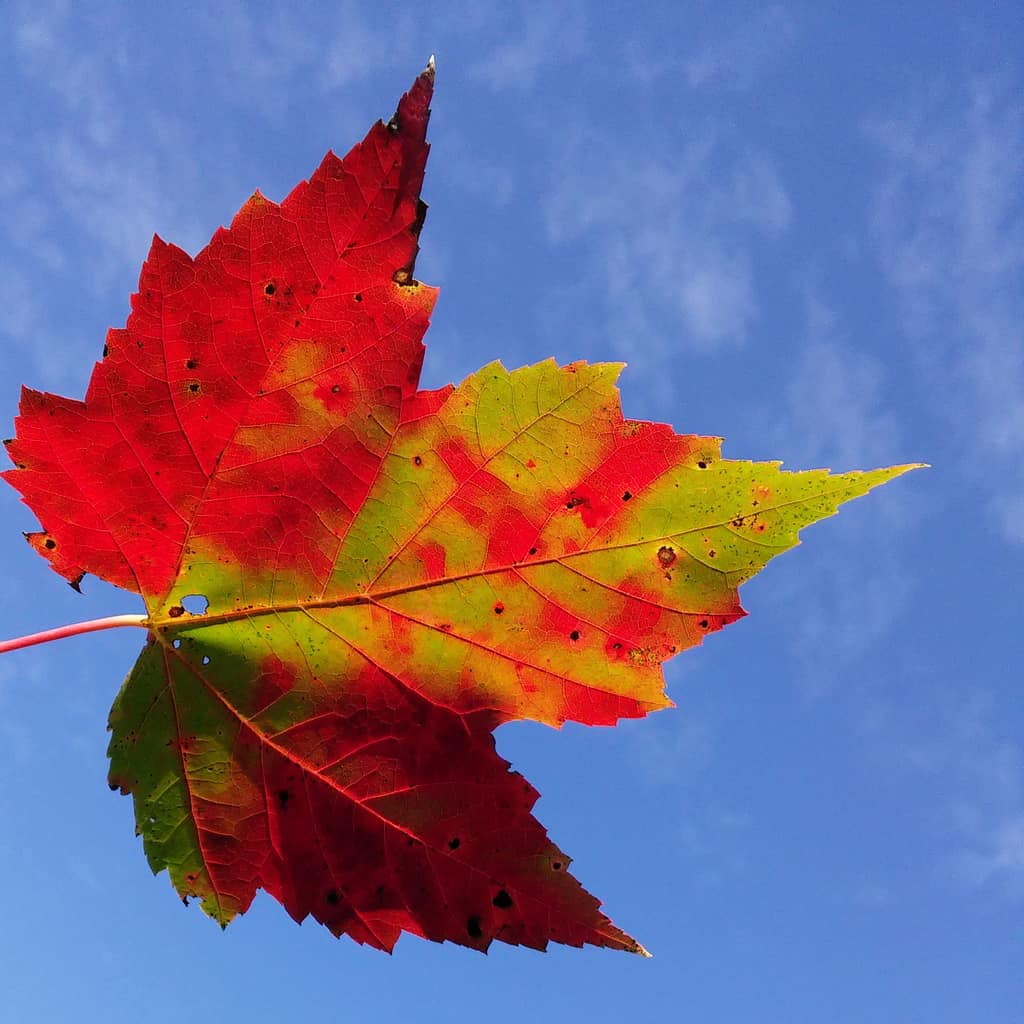It’s fall!
Don’t miss the trees turning those gorgeous colors!

The days are shorter and cooler and the trees are changing colors. Beautiful deep reds, oranges, and vibrant yellows…. So, how does that happen, and why in the fall?
Trees that change color are called deciduous (which means it sheds leaves annually) or broad-leaf trees, which have, obviously, broad leaves with a relatively large surface area. Leaves have two purposes – to convert carbon dioxide to oxygen (thank a tree for our fresh air!) and also to convert sunlight into energy for the tree. The large surface area helps the leaves gather more sunlight and therefore, more energy. The leaves “breathe in” carbon dioxide and “exhale” oxygen (for more information about this process check Plant Biochemistry by Florence K. Gleason with Raymond Chollet).
Leaves actually have several other pigments, besides green, which are always present – red, yellow, orange and even purple (beets, carrots, cherries!). The leaves on trees (and many plants) have so much green pigment, however, that the other colors aren’t visible – until fall, that is! The green pigment comes from chlorophyll which is used in photosynthesis (the complex process by which carbon dioxide and water are converted into carbohydrates by using the energy from the sun). The carbohydrates that are formed are then stored in the branches, roots, and buds of the trees.

We all know that, in the fall, days get shorter and cooler and the nights get longer – and cooler! Broadleaf trees are sensitive to sunlight – they need the sunlight to transform the chlorophyll. When there is less sunlight, the leaves make less chlorophyll, which means the trees become less green and the other pigments begin to become visible. Different types of trees have differing amounts of pigment – for example, trees with more anthocynins (the pigment responsible for the red and purple hues) will be more red than those with less. Temperature, sunlight, and soil moisture also influence the quality of the fall colors. A spring and summer with ample moisture followed by a dry, cool, and sunny autumn will produce the brightest fall colors.
Why do leaves fall? Without chlorophyll to help them make energy, they are no longer needed. The energy that they have produced is stored in the tree. The other pigments also eventually break down – when there is even less light, or if they are frozen. The only pigment that then remains is brown (tannins), and at that point the leaves drop off. The tree then lives through the winter on the energy that it has stored. When the days begin to get longer and warmer, the tree grows new leaves and the process begins all over again.
(Why don’t coniferous trees – evergreens, firs, etc. – change color and drop their needles? Briefly, needles are smaller, more watertight, more wind resistant and are able to photosynthesize all year long. Since needles have a reduced surface area, they are harder to destroy – and less tasty for insects!).
Now, go for a walk, hop on your bike or in your car and go see the beauty of fall!
Happy Leaf Peeping!!

RESOURCES:
Beck. Charles B. An introduction to plant structure and development : plant anatomy for the twenty-first century. Cambridge, UK ; New York : Cambridge University Press. Engineering Library QK641 .B38 2010
Gleason, Florence K. Plant Biochemistry. 2012. Sudbury, MA : Jones & Bartlett Learning. Engineering Library QK861 .G64 2012
Baranoski, G.V.G. 2004. Light interaction with plants : a computer graphics perspective. Chichester : Horwood Pub. Engineering Library QK757 .B37 2004
Deciduous vs. Coniferous. The Roaming Naturalist. Date Accessed: Sept. 25, 2020